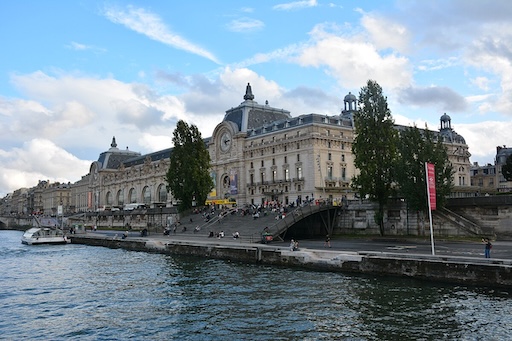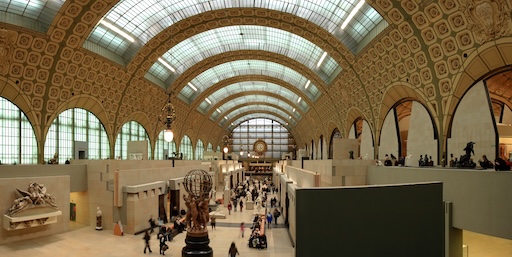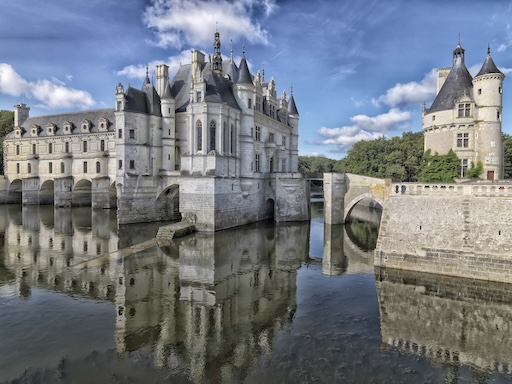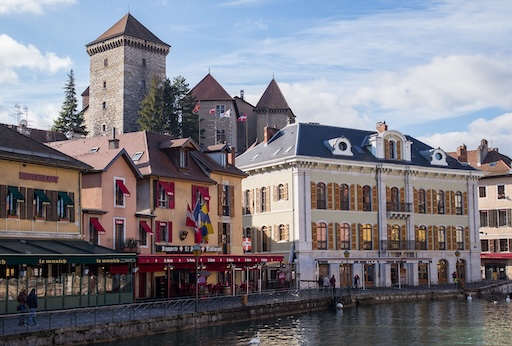
There’s a moment when you step into the main hall of the Musée d'Orsay where you stop walking. Maybe it’s the golden light filtering through the arched glass ceiling. Maybe it’s the towering clock at the far end, still keeping time over what was once a bustling train station. Or maybe — most likely — it’s the realization that you’ve just entered one of the most beautiful museums in the world.
While the Louvre might be bigger and the Centre Pompidou bolder, the Musée d'Orsay has something uniquely captivating — a soul. And a whole lot of Impressionist masterpieces.
From Steam Trains to Starry Nights
Once upon a time, the building was a railway station: Gare d'Orsay, built for the 1900 Exposition Universelle. Sleek, modern (for its time), and full of promise. But as train technology advanced and platforms became outdated, the station fell into disuse. It was nearly demolished in the 1970s.
Thankfully, someone had the vision to turn it into an art museum. And not just any art museum — a home for 19th and early 20th century masterpieces. In 1986, the Musée d'Orsay opened, and it’s been dazzling visitors ever since, especially from the United States, where Impressionist art has a massive following.
The Art Hits You Immediately
The layout is genius. You start at ground level and work your way up through time. The lower floors focus on early movements — Realism, Academic painting, and the birth of modernism. But the real magic happens upstairs.
There, bathed in natural light, are rooms filled with Van Gogh’s swirling skies, Monet’s dreamlike landscapes, Renoir’s joyful figures, and Degas’s dancers caught mid-motion. The colors pop. The brushstrokes whisper. You feel like you’re standing inside a dream.

One moment I was inches from Starry Night Over the Rhône, the next I was face-to-face with Whistler's Mother. Around the corner? A room full of Toulouse-Lautrec posters that make you want to sip absinthe and write poetry.
The Clock Room – Time Stands Still
If there’s one photo everyone takes, it’s in the clock room. Behind one of the museum’s original station clocks is a lookout area with sweeping views of the Seine and Montmartre in the distance. Silhouettes of visitors framed by giant Roman numerals. Time quite literally becomes art here.
It’s more than Instagrammable — it’s surreal. A moment of stillness in a place bursting with creativity.

What Makes It a Favorite for American Visitors?
It could be the way the museum balances grandeur with intimacy. Or maybe it’s how familiar the artworks feel — these are the same paintings you saw in textbooks, now alive in oil and canvas. American tourists often list the Musée d'Orsay as their favorite stop in Paris. And for good reason.
There’s a human scale to it. You don’t get lost in endless corridors. You wander. You pause. You breathe. You connect. It’s as much about feeling as it is about looking.
How to Visit
The museum is open Tuesday to Sunday, from 9:30 AM to 6 PM (open late until 9:45 PM on Thursdays). Closed Mondays — don’t forget that. Entry is around €16, and it's free for EU residents under 26. The nearest metro stop is Solférino or RER Musée d'Orsay.
Buy your tickets online to avoid queues, and come early — not just to beat the crowd, but to experience the magic of empty galleries and sunlit paintings before the bustle begins.
Tips for First-Time Visitors
- Start upstairs: Head straight to the Impressionists on the fifth floor before it gets crowded. Then work your way down through the earlier works.
- Take your time in the sculpture hall: Rodin, Claudel, and others make this airy corridor feel like a slow dance in stone.
- Visit the café: The restaurant, set in an ornate ballroom, is a visual treat — even if you just go for coffee and cake.
More Than a Museum
The Musée d'Orsay doesn’t just show you art — it tells a story of transformation. From industrial relic to cultural treasure. From abandoned platforms to paintings that moved the world. It’s a place where eras overlap, where time seems suspended in golden light, and where creativity never stops ticking.
For lovers of beauty, history, and moments that make you stop mid-step — this is your museum.
Final Thoughts: A Masterpiece of a Visit
Paris has no shortage of stunning museums. But few feel as alive as the Musée d'Orsay. It’s not about checking off famous paintings — it’s about feeling them, absorbing them, letting them stay with you long after you’ve stepped back out onto the Left Bank.
If you're chasing hidden wonder, start here — under the arches of a train station that became a temple of light, color, and emotion.
Share this story and inspire others.
Tags: Musée d'Orsay, Paris, France, Impressionism, art museum, Van Gogh, Monet, Renoir, travel, hidden wonders
 Parc National des Calanques – Limestone Cliffs and Hidden Blue Coves Near Marseille
Parc National des Calanques – Limestone Cliffs and Hidden Blue Coves Near Marseille
 Nice – Where the Riviera Glitters with Old-World Glamour
Nice – Where the Riviera Glitters with Old-World Glamour
 Verdon Gorge – France’s Grand Canyon of Emerald Waters
Verdon Gorge – France’s Grand Canyon of Emerald Waters
 Château de Chenonceau – The Elegant Castle Over the Cher River
Château de Chenonceau – The Elegant Castle Over the Cher River
 Disneyland Paris – Where Fairy Tales Speak French
Disneyland Paris – Where Fairy Tales Speak French
 Annecy – The Venice of the Mountains
Annecy – The Venice of the Mountains